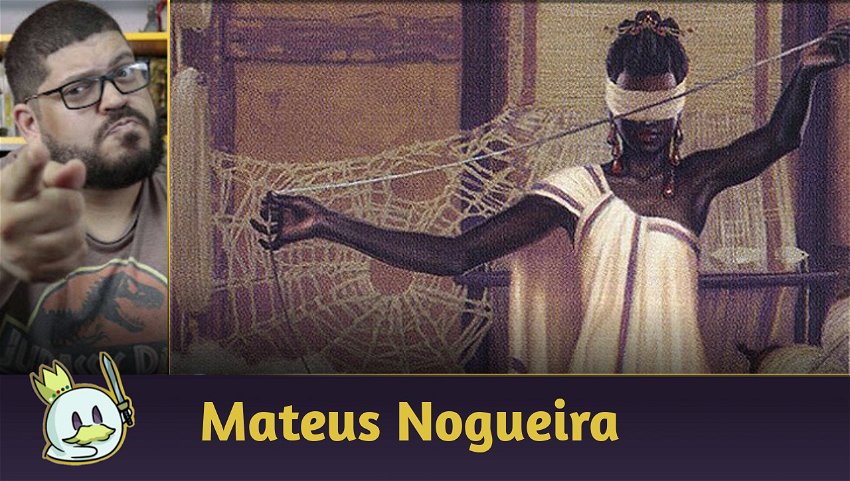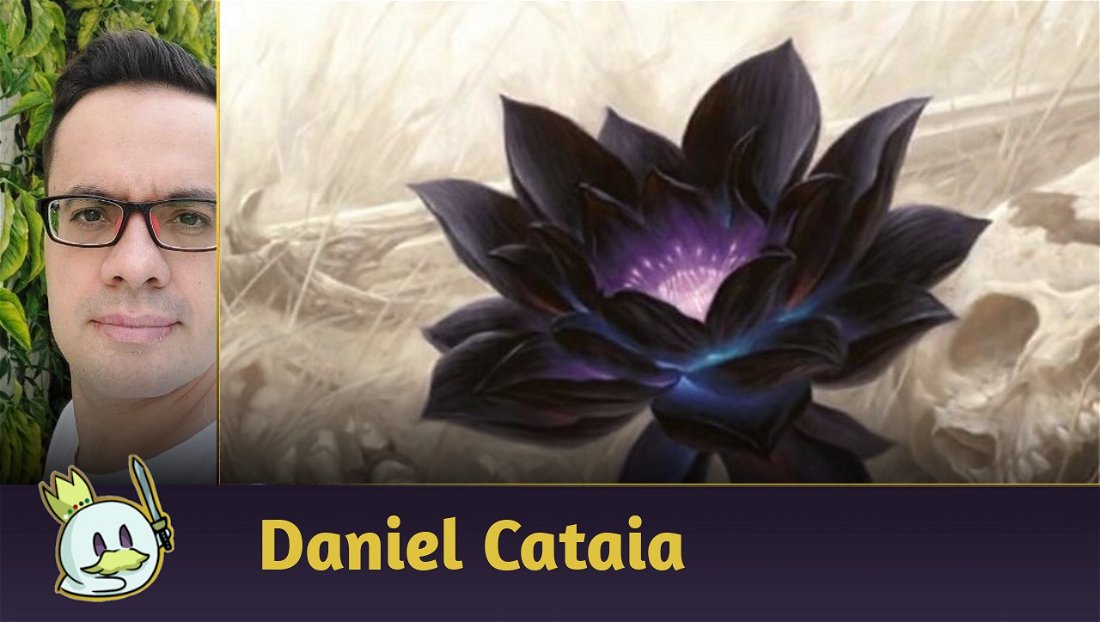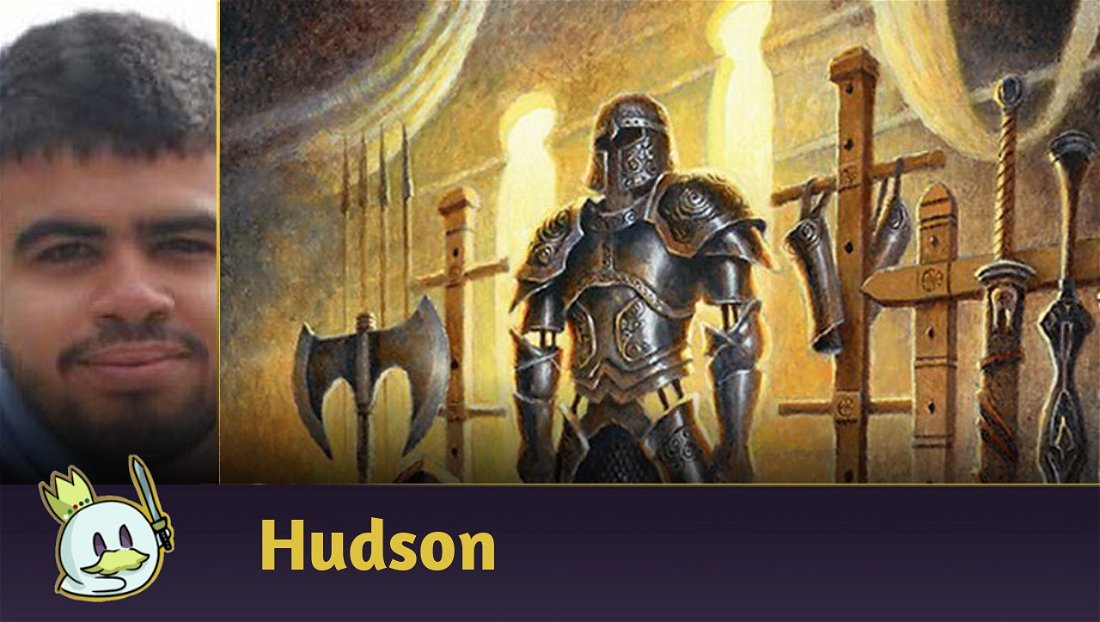Introduction About Stax
Stax. Hated or loved, no middle terms. One of the Commander's boogeymen. Although it is not seen favorably by many players, it is an extremely important archetype, mainly for keeping the most greedy strategies in check.
The Stax archetype specializes in denying and restricting resources, taxing plays, abusing disruption and sacrifices, derailing opponents' gameplan development and effectively stalling the table while usually winning slowly. It is common to be present with a greater focus on creatures, in this case, known as Hatebears because they are small-bodied creatures with disruptive effects.
As a curiosity, the name Stax originally comes from Smokestack, used in the early days of the archetype, together with the English word Tax, that is, rates, which already conveys the idea of creating difficulties, which is this archetype's goal.

Their cards tend to have a low mana cost and high impact on the game, as they try to slow down the pace of the game as much as possible based on their permanents. The Stax archetype in competitive Commander today rests on two foundations: Taxes and Restrictions.
The first foundation is the “Taxes”.

These are cards that tax plays, increasing their costs to perform or maintain them: Thalia, Guardian of Thraben, Vryn Wingmare, Glowrider, Thorn Of Amethyst, Sphere of Resistance, Trinisphere, Leonin Arbiter, Strict Proctor, Suppression Field and Kataki, War's Wage are some examples. These cards tend to have low-cost and stop explosive game starts or removals followed by a high-density game-winning attempt. Sometimes one mana makes all the difference between winning and losing.
The second foundation is the “Restrictions”.

As the name implies, they limit or punish the scope of plays that can be performed: Drannith Magistrate, Torpor Orb, Cursed Totem, Linvala, Keeper of Silence, Null Rod, Collector Ouphe, Opposition Agent, Aven Mindcensor, Dauthi Voidwalker, Rest in Peace, Rule of Law, Sanctum Prelate, Yasharn, Implacable Earth, etc.
These are examples of fundamental effects that prevent opponents from having faster winning lines, giving the Stax deck enough time to create the necessary conditions to win, either through combat (beatdown) or through some combo line. From what is restricted, together with the qualities of the commander, the best lines of victory to be followed are designed.
Top 5 Stax decks
Considerations and Honorable Mentions
And which are, in my view, the best Stax commanders? First, it is necessary to make some considerations.
The secret of a good Stax is not losing sight of your victory, and not simply fixating on the idea of “locking the game 100%” and stalling. The longer you delay, the greater the chance that an opponent's top deck will resolve your board and make your victory slip through your hands.
Your pieces must be very well-chosen during deck building, attacking the meta, and must be blunt against your opponents. Also, the less it affects you, the better. Transforming your symmetrical effects into asymmetrical is what will make the difference, that is, make your opponents' life difficult without making your own life difficult. A classic example of this situation is Urza, Lord High Artificer + Winter Orb, which allows you to tap the orb on the pass and untap all your lands while your opponents are destitute.
It's worth remembering that the boundaries between archetypes are cloudy and it's often not simple to draw a line where they begin and end. At this point, decks that use Stax pieces are common, but depending on the point of view, like mine, they are not considered as such.
The most common are the Midrange decks, characterized by the flexibility of allowing you to switch the game posture efficiently, between a more proactive and reactive game. Midrange decks with Stax effects tend to have a higher density of proactive plays and only the most efficient Stax pieces, Silver Bullets, which turn off certain strategies.

Therefore, it is worth mentioning three Midrange decks that could be in the top 5 in a less restrictive view of the Stax archetype: Hermit Pod (Tymna the Weaver & Tana, the Bloodsower with lines of Hermit Druid and Birthing Pod), Minsc, Beloved Ranger and Tayam, Luminous Enigma.
Some typically Stax decks will also be left out (and could be in at another time), but it wouldn't be a sin if they were in this top 5: Oswald Fiddlebender, Yasharn, Implacable Earth, Derevi, Empyrial Tactician, Kenrith, the Returned King, Queen Kayla bin-Kroog and Dhalsim, Pliable Pacifist, with these last two commanders having a lot of potential yet to be explored.
5 - Shalai, Voice of Plenty

Opening our top 5, we have Shalai, Voice of Plenty! The list presented was created and is maintained by the iconic Romário “El Vesgo”. The deck is typical Selesnya Hatebears, but what makes it more efficient than, say, a Yasharn, Implacable Earth in the Command Zone? Here are two features.
The first of these is the protection provided to your creatures, thanks to the Hexproof provided by Shalai. With the format's lower density of sweepers and a higher amount of targeted removals, it becomes much harder for an opponent to opportunistically remove a Stax piece and win, especially considering that you can still count on Mother of Runes and Giver of Runes to protect the commander, and consequently, the rest of the creatures.
The second is having a commander who, in addition to protecting, is a mana sink, that is, it allows you to convert your excess mana into an advantage. In attrition games, it can easily turn your little creatures into gigantic monsters the longer the game drags on. In addition, and even more relevant, it allows you to make your creatures have infinite power with green infinite mana combos.
For this reason, it has lines with Devoted Druid + Vizier of Remedies / Swift Reconfiguration, in addition to Ashaya, Soul of the Wild + Argothian Elder / Ley Weaver or Ashaya, Soul of the Wild + Quirion Ranger + any creature that generates two or more green mana. And Maze of Ith + Argothian Elder / Ley Weaver during combat.
Therefore, by the combination of protection and strategic aggressiveness (at the level of aggression or combos) we have Shalai, Voice of Plenty in our 5th place.
4 - Heliod, Sun-Crowned

Our 4th place player can be considered a veteran in the cEDH, having already been among the best positioned decks in several tournaments around the world.
At first glance, many may scoff at it for being a Mono White deck and assume that because it has a limited color, it will naturally be in disadvantage. However, there is something obvious to note: Stax's best pieces are in the white identity. What you lose in card quality provided by multiple colors, you gain in redundancy. Your game plan may be more limited, but it will be done consistently.
But what makes Heliod, Sun-Crowned a good deck? And why not just use any other commander in that identity?
The main advantage here can be summed up in two words: Walking Ballista. With only this creature and Heliod on the field, it is possible to win the game. Having only two counters, it is possible, with the commander, to provide Lifelink to the Ballista. By removing 1 +1/+1 counter, it will deal one damage, trigger the commander and place one more +1/+1 counter, and you can repeat the process to victory with infinite damage.
Therefore, despite being expensive in mana, it is an easy combo to be assimilated, especially if we consider that there are tutors in sufficient density for this purpose: Enlightened Tutor, Inventors' Fair, Scrapyard Recombiner, Recruiter of the Guard, Ranger of Eos and Ranger-Captain of Eos. In addition to having combo redundancy in the form of Triskelion.
In case the combo route goes wrong, remember that beatdown is always a possible route for Hatebears decks, and this becomes really viable with Heliod's ability. Provide Lifelink to your creatures, deal damage and put counters. In a few turns, this becomes the formula to win without having to combo.
In short, what Heliod, Sun-Crowned provides is:
1 - A difficult commander to interact with;
2 – A combo with only one card, having access to redundancy and recursion in the deck;
3 - A realistic beatdown plan.
3 - Tymna the Weaver & Kodama of the East Tree


Our bronze medal goes to the duo Tymna the Weaver & Kodama of the East Tree. It is not as common for this list to be seen in tournament Metagames, but I believe it deserves its place in this top. The list in question is from the user CrownWarrior.
Tymna the Weaver is one of the most absurd commanders ever released, and it's no wonder there is a predominance of strategies with this commander in the best decks. This is nothing new for anyone who knows a bit about cEDH in the last six or seven years. In decks with a minimally reasonable number of creatures, it is not uncommon for her to be seen being able to draw 3 more cards per turn.
In this specific deck, it expands the color identity and excels at taking advantage of the hatebears we use. Since we'll be using creatures to slow down our opponents' game, Tymna will make sure our gas doesn't run out, and we'll continue to put pressure on the game.
Kodama of the East Tree, in turn, is a powerful source of tempo advantage, as it allows us to extract twice as much value in a single play. It allows us, for example, to answer an opponent with an Opposition Agent and at the same time put an Archon of Emeria into play, or when playing a Windswept Heath to make two additional lands in the same turn.
One of Kodama's most interesting points is breaking the symmetry of effects like Rule of Law, and while your opponents cast one spell per turn, you, in practice, manage to play two.

Furthermore, Kodama opens up the possibility to do some interesting combo lines, the main one being through Sidisi, Undead Vizier.
- With Kodama in the field, you will have the Exploit trigger and the Kodama trigger. Resolve the Exploit, search for Karmic Guide and through Kodama, put it in the battlefield.
- Reanimate Sidisi, Undead Vizier, trigger Kodama and fetch one more card. Put Felidar Guardian in play, blink Karmic Guide and return Sidisi, Undead Vizier.
- Repeat the process and get and play Restoration Angel. This time, blink Felidar Guardian and when it returns, blink Restoration Angel and toggle between one and the other. You will have infinite triggers with Kodama of the East Tree.
- To stop the loop, flash Karmic Guide again, reanimate Sidisi, Undead Vizier again, then look for and play Acererak the Archlich. The lich will enter a dungeon and come back to your hand, but remember that you have infinite Kodama triggers on the stack. This way, you can enter the Lost Mine of Phandelver dungeon infinite times, which allows you to drain one life from each opponent, closing the game by performing only one single spell on the turn, allowing you to pass through your own stax.
The strong combination of card and tempo advantage of this duo, with an Abzan color identity and the possibility of combo with a “single” card gives the necessary contours to place this duo in our top 5.
2 - Jetmir, Nexus of Revels

One of the 2022 freshmen among the Stax decks is our runner-up! Jetmir, Nexus of Revels often fails to impress the casual eye, but there seems to be a consensus among returning Stax players that he could rank among the best.
Interestingly, it is not a deck that has combos, which would make many classify it as a “Winconless” deck, which I often consider a wrong definition, since it tends to disregard aggression as a win condition.
In this case, there is a solid enough wincon in the command zone that it allows for a very aggressive gameplan. With a high density of creatures (49 in total!), there is an easy progression of at least one creature per turn. In addition to the various Hatebears, there are also several creatures that allow us to quickly increase our board state, such as Adeline, Resplendent Cathar, Goblin Rabblemaster, Legion Warboss, Krenko, Tin Street Kingpin and Tendershoot Dryad.
With Jetmir, Nexus of Revels and at least six creatures, that's already an additional total of +12 power creatures with Vigilance and Trample. With nine, which is actually quite simple with token generators, each creature gets +3/+0, Vigilance, Trample, and Double Strike. That is, in this scenario, a single Birds of Paradise does a total of six points of damage “by itself”. A Thalia, Guardian of Thraben deals ten damage. So, naturally, you transform your board state, which would naturally be great because you're already playing hatebears, into a beating meat grinder.
With Naya being a powerful color combination to play as hatebears, with a mighty and affordable commander to convert a board of mediocre creatures into something terrifying for opponents, this list is something worth noting among the Stax, as it makes it possible to efficiently do one of the greatest difficulties of the archetype: close the game.
1 - Winota, Joiner of Forces

So far, the previous four positions are debatable, and I can easily see different views from mine. But our gold medal is indisputable. It breathed new life into Stax and brought the Boros combination to cEDH: Winota, Joiner of Forces, the best Stax deck in the format. It was always present among the top 16 and top 4 of numerous tournaments around the world, by the way, being able to win many relevant tournaments.
To illustrate this deck, I brought a list of mine together with the player Gabriel Medeiros (aka Jack or Gaboo), in a more punitive approach to more greedy decks, but certainly not the only one. There are approaches with more combos and also even more aggressive ones.
What they all have in common is a solid core of hatebears, many of which non-human. They, with token generators, are key in order to extract value from the commander's absurd ability to put humans directly on the battlefield during combat.
No wonder the deck is also called Staxball, as it works like a snowball that grows more and more as it rolls. Stax parts bring even more parts.
It is mainly through humans that we get the game's finishers. Aggressors like Rick, Steadfast Leader, Blade Historian and Mirror Entity, bombs like Lena, Selfless Champion, or even combos like Auratouched Mage + Breath of Fury (with any token creator) or Rionya, Fire Dancer + Combat Celebrant.
It's absurd how the deck develops if the proper interactions don't occur as soon as Winota touches the battlefield. Explosive card advantage and tempo advantage at their best.
More stax Commanders
If you don't like my Top 5, there are others commander that will work in a stax theme, take a look bellow:

Conclusion
We have reached the end of our list! I hope this was a worthwhile read, and thanks for following along! Remember that this is my view, and it is not set in stone. I tried to consider my personal experiences and those of Stax players nearby, as well as the decks' effectiveness in tournaments and events.
What would your top 5 look like? Would you also consider midranges with stax pieces to create the list? Do you agree with the choices? Disagree? Comment down below!
Thanks for reading!














— Comentários 0
, Reações 1
Seja o primeiro a comentar